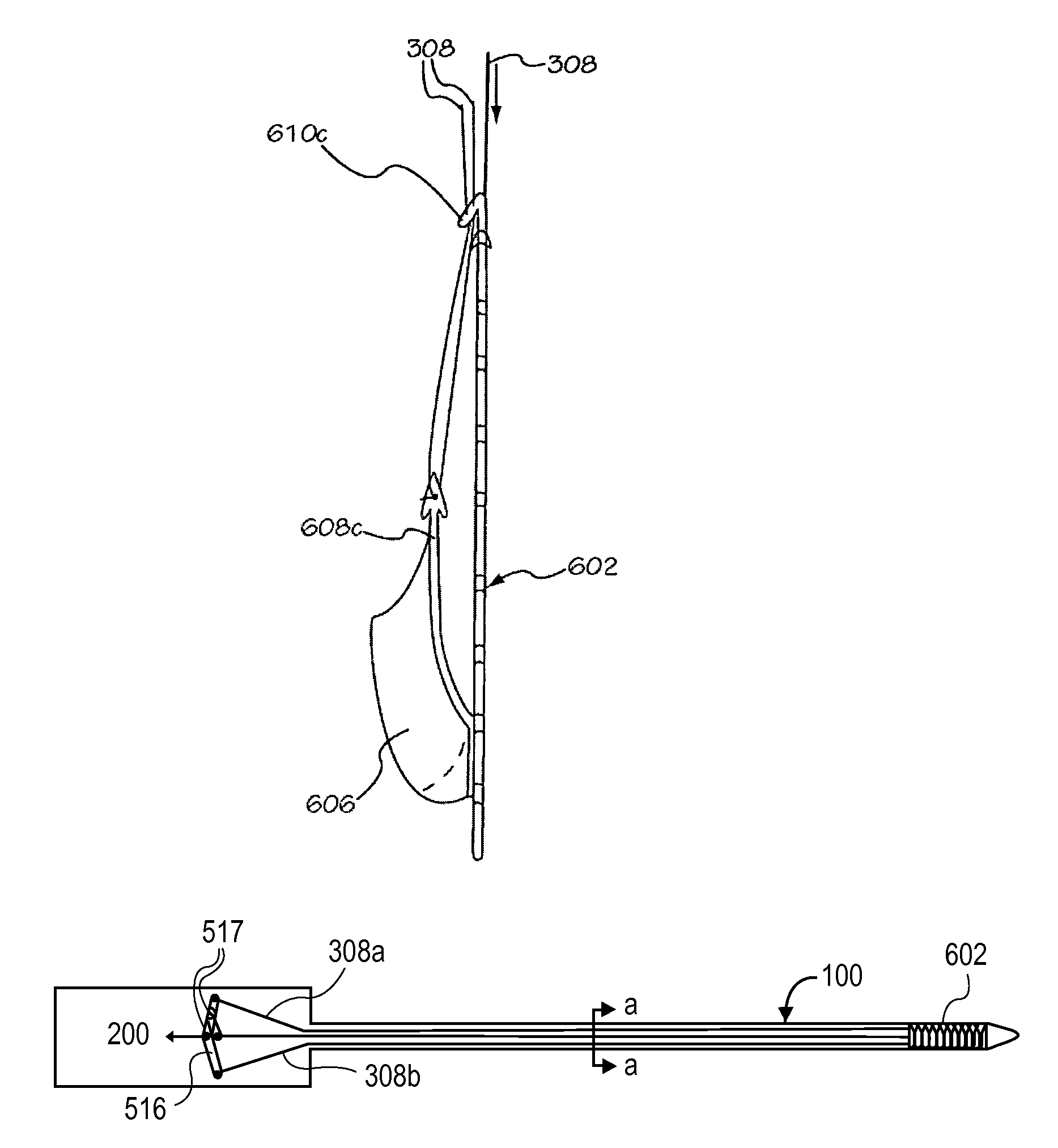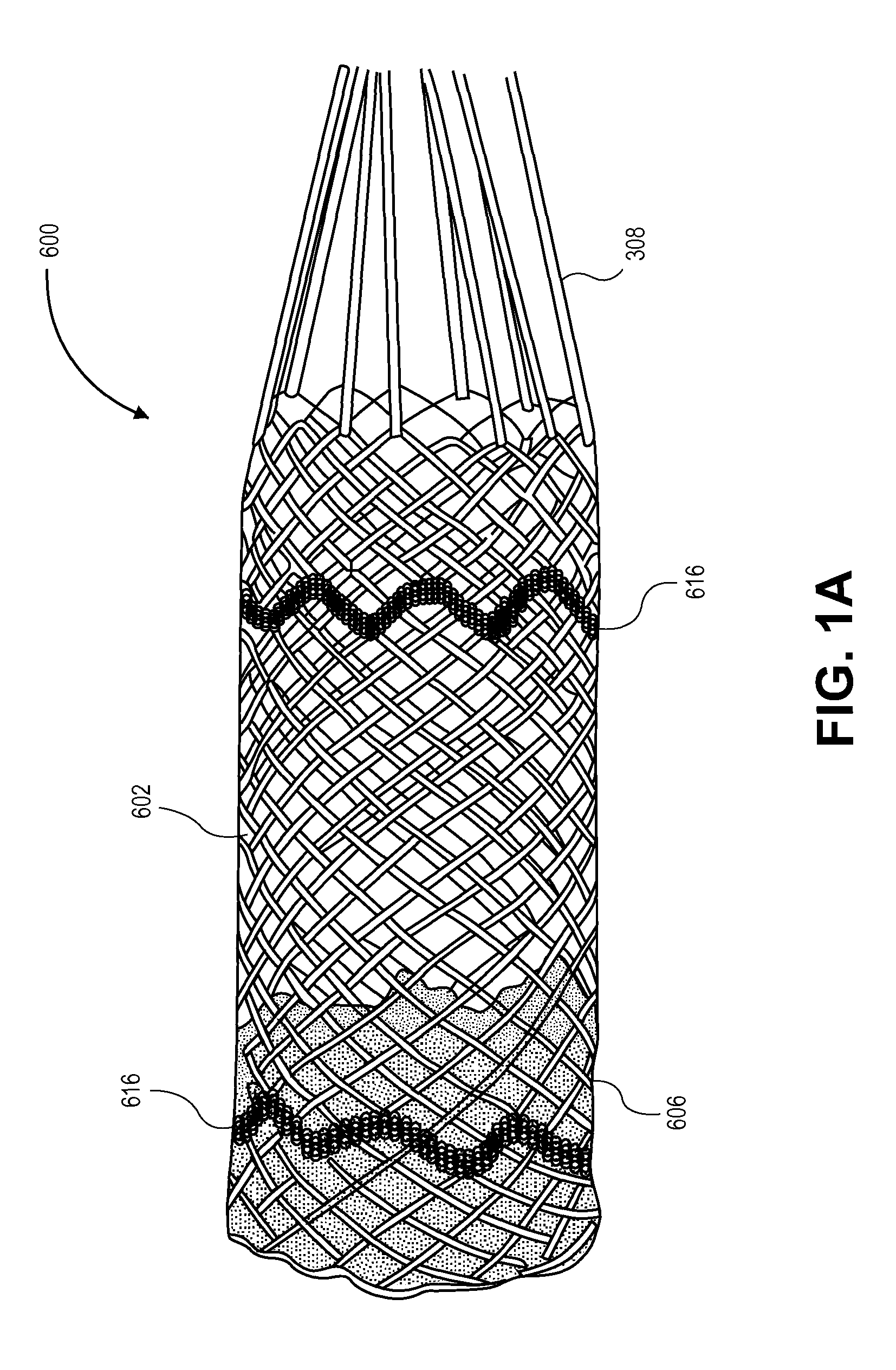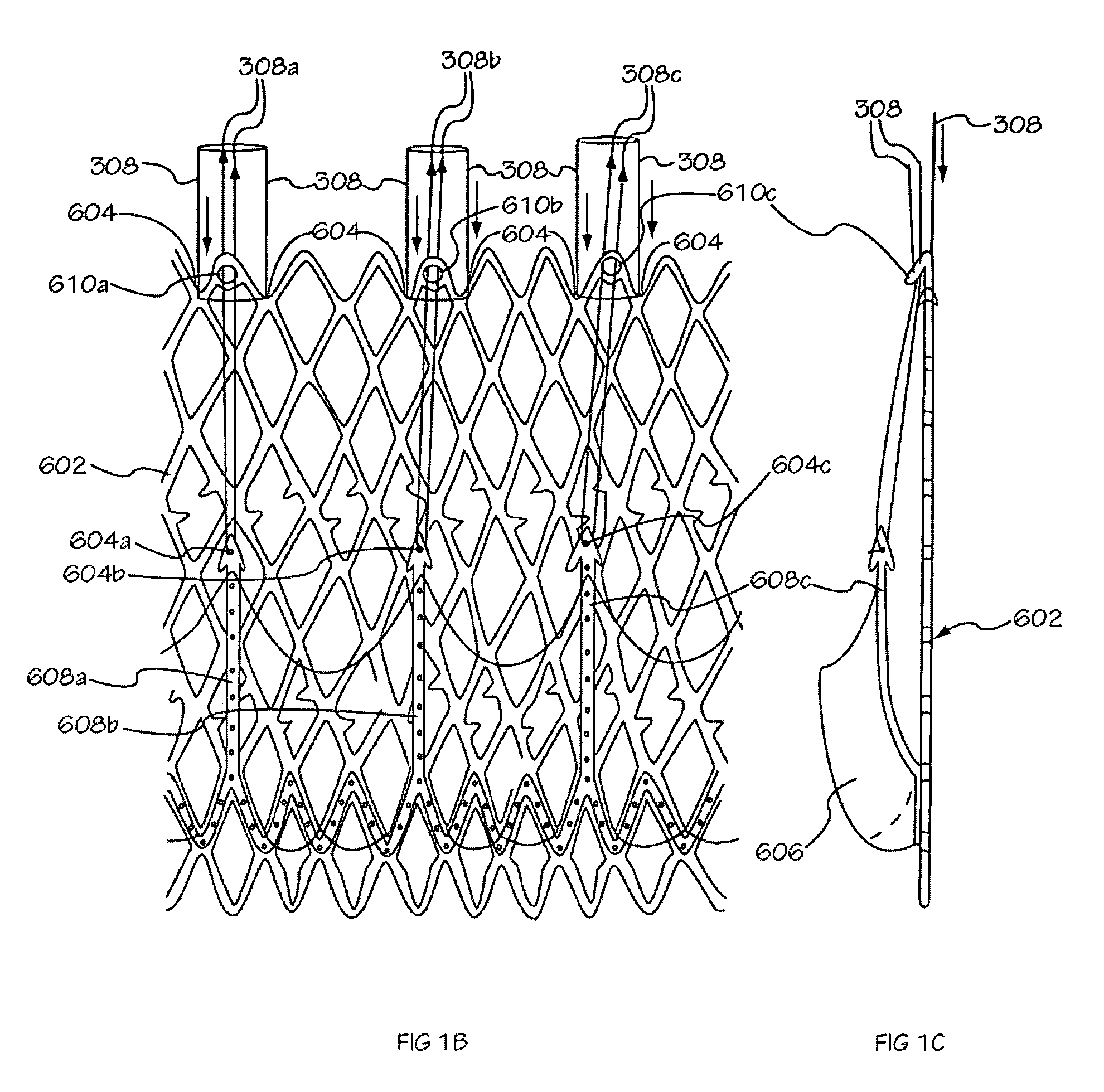Medical implant deployment tool
a technology for deploying tools and heart valves, which is applied in the field of system for the delivery and deployment of heart valve replacements, can solve the problems of heart failure, adverse reactions to anesthesia medications, bleeding, etc., and achieve the effect of safe and effective steps and safe delivery of the proper for
- Summary
- Abstract
- Description
- Claims
- Application Information
AI Technical Summary
Benefits of technology
Problems solved by technology
Method used
Image
Examples
Embodiment Construction
[0040]The invention is drawn to methods, mechanisms and tools for the endovascular deployment of medical implants, such as replacement heart valves. According to some embodiments of the invention, the deployment process includes actuating one or more actuation elements to control and / or perform actions of the implant deployment mechanism, or mechanical elements of the implant itself. The operation of the implant deployment mechanism or the mechanical elements of the implant are often fully reversible, allowing a physician to partially deploy and then reverse the deployment operation of (“undeploy”) the implant. This provides the ability to reposition and redeploy the implant. As a general reference, the orientation of the system is referred to as is traditional for a medical device catheter. The proximal end is nearest the physician or operator when the system is being used. The distal end is furthest away from the operator and is in the patient's vasculature. To facilitate imaging ...
PUM
 Login to View More
Login to View More Abstract
Description
Claims
Application Information
 Login to View More
Login to View More - R&D
- Intellectual Property
- Life Sciences
- Materials
- Tech Scout
- Unparalleled Data Quality
- Higher Quality Content
- 60% Fewer Hallucinations
Browse by: Latest US Patents, China's latest patents, Technical Efficacy Thesaurus, Application Domain, Technology Topic, Popular Technical Reports.
© 2025 PatSnap. All rights reserved.Legal|Privacy policy|Modern Slavery Act Transparency Statement|Sitemap|About US| Contact US: help@patsnap.com



